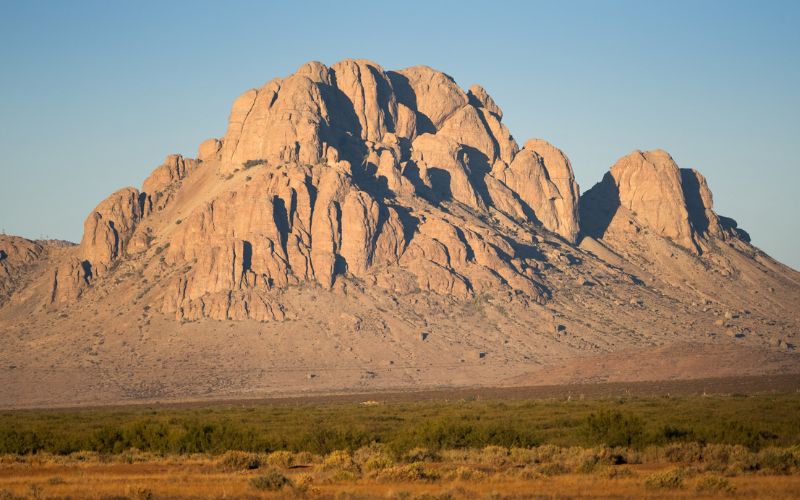
- Details
- By Native News Online Staff
Last week, a collaborative effort was announced to turn the Florida Mountains and surrounding peaks in Luna County, New Mexico, into the Mimbres Peak National Monument, which advocates say would conserve Indigenous cultural and historical resources while boosting the recreational economy.
The proposed national monument would include more than 245,000 acres that are home to cultural and historic sites important to modern-day tribes and pueblos who hold deep spiritual connections with the lands.
“The lands surrounding Deming hold stories and a history that have shaped our community for generations,” said Luna County Commissioner Ray Trejo in a press release. “They also hold opportunities for the future. We need to look no further than neighboring counties to know that protected public lands are good for our local economies and the people who call New Mexico home.”
“That’s why over the past year the city and county have been looking at the opportunities, the process, and the concept of a new national monument. This hard work has culminated in today’s announcement which opens the door for everyone to get involved and help shape the future of public lands in Luna County.”
 Make A Donation Here
Make A Donation Here
Southern New Mexico’s economy is built around these public lands that not only serve as an economic driver but provide visitors with diverse recreational opportunities including hunting, hiking, equestrian use, biking, camping, exploring dirt roads, camping, picnicking, and photography.
Leaders of the county and city have recognized the value that public lands have provided the community and have witnessed the impact protected lands in neighboring counties have had on businesses, motels, gas stations, and outfitters in the region. The National Parks and Monuments provide visitors with opportunities to patronize these local businesses.
Southern New Mexico’s economy has seen steady growth over the last decade in part due to the increased visibility of the Organ Mountains-Desert Peaks National Monument. This fall, stakeholders began to strategize for establishing the Florida Mountains and surrounding peaks as a national monument.
The area holds critical water resources that are important for the breeding, foraging, and migration of the region's wildlife. Prominent species include the Persian Ibex, pronghorn, mountain lion, mule deer, Coues deer, black bear, elk, javelina, fox, badger, eagles and other raptors, and quail.
"There are many reasons for protecting our natural resources. But throughout Southern New Mexico there is a recognition that our natural landscape contributes to the identity and shape of our communities,” said Kyla Navarro, outreach coordinator with the Friends of Organ Mountains-Desert Peaks National Monument, in a press release. “That is why protecting these outdoor spaces is essential. It is moving to see Luna County come together to advocate for the conservation of their landscape, especially with the hopes that their youth and future generations can continue to benefit from their public spaces."
More Stories Like This
Apache Leader Walks 60 Miles to Court Hearing That Will Decide Fate of Sacred Oak FlatRappahannock Tribe Raises Sovereignty and Environmental Concerns Over Caroline County Water Permit
Klamath Indigenous Land Trust Purchases 10,000 Acres as Salmon Return
Trump signs law that revokes some limits on drilling in Alaska’s National Petroleum Reserve
Southern Sierra Miwuk Nation Gets 900-Acres ofLand Back
Help us defend tribal sovereignty.
At Native News Online, our mission is rooted in telling the stories that strengthen sovereignty and uplift Indigenous voices — not just at year’s end, but every single day.
Because of your generosity last year, we were able to keep our reporters on the ground in tribal communities, at national gatherings and in the halls of Congress — covering the issues that matter most to Indian Country: sovereignty, culture, education, health and economic opportunity.
That support sustained us through a tough year in 2025. Now, as we look to the year ahead, we need your help right now to ensure warrior journalism remains strong — reporting that defends tribal sovereignty, amplifies Native truth, and holds power accountable.
 The stakes couldn't be higher. Your support keeps Native voices heard, Native stories told and Native sovereignty defended.
The stakes couldn't be higher. Your support keeps Native voices heard, Native stories told and Native sovereignty defended.
Stand with Warrior Journalism today.
Levi Rickert (Potawatomi), Editor & Publisher

